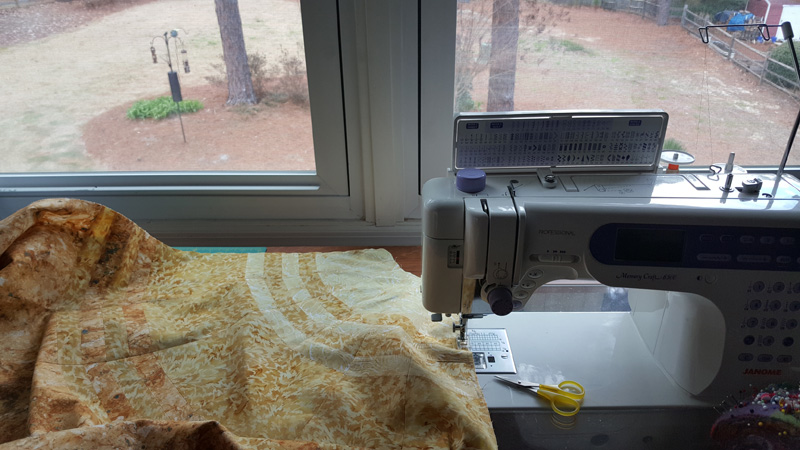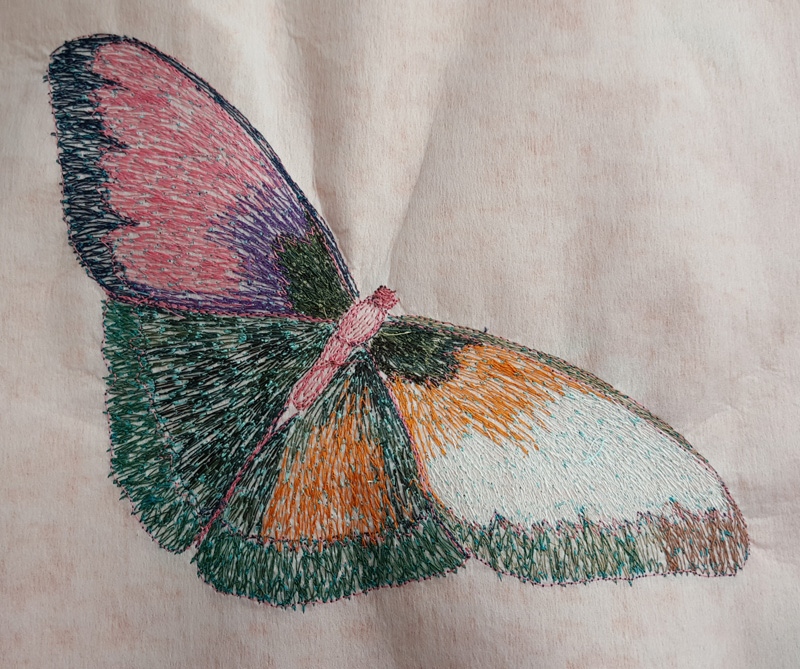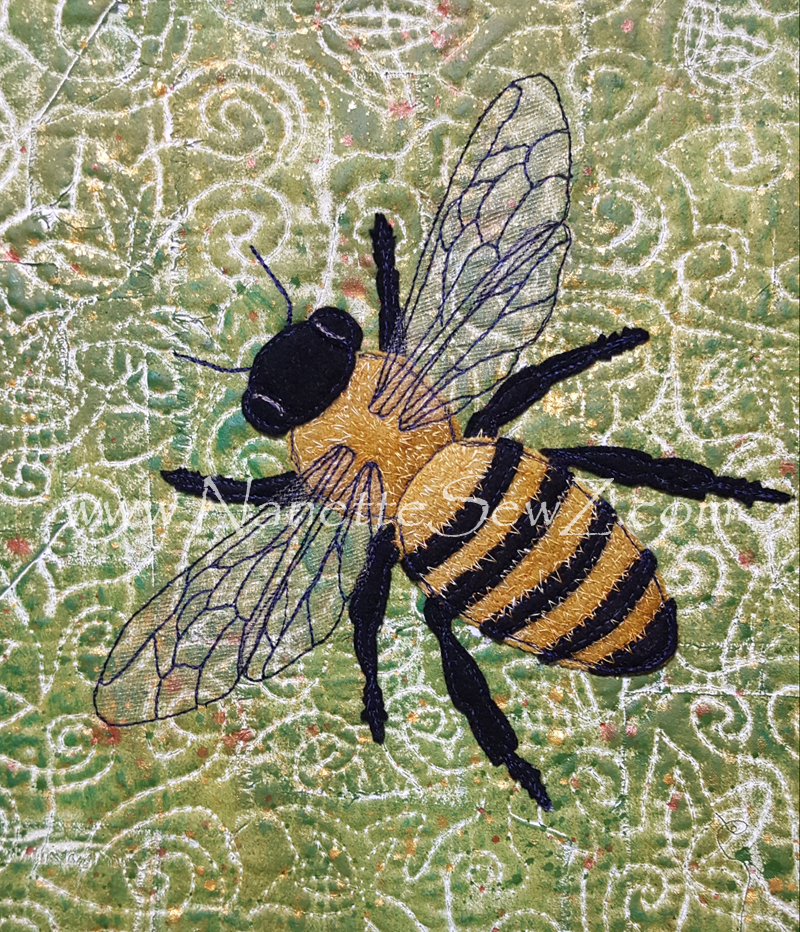 My art quilts contain layers and layers of process. I know it looks complicated, because it kind of is complicated. I find I get stuck between stages. Frequently, I’m not sure how to proceed with an idea that’s in my head.
My art quilts contain layers and layers of process. I know it looks complicated, because it kind of is complicated. I find I get stuck between stages. Frequently, I’m not sure how to proceed with an idea that’s in my head.
I had that problem with this quilt (which hasn’t been named yet). The idea came to me sometime before the spring of 2013. I know this because, the inspiration photo that was taken March 23, 2013. About a year later, I also took some staged photos of a pine cone. However, I’m pretty sure I was inspired to make this quilt long before I took the photos.
I have evidence that last summer (June 2017) I started experimenting with the design elements. However, I don’t think I actually started making the quilt until this past fall. Until last fall, I was thinking about it, but hadn’t shown much action. So when should I say I actually started the quilt? When the idea hit and the years I spent thinking about it? Or, was it when I actually started putting the idea into fabric?
 I have photographic proof that I was working on the quilt in October 2017. However, in July I know I was at a fabric store looking for the perfect “pinestraw” fabric. So did I start in October? or July?
I have photographic proof that I was working on the quilt in October 2017. However, in July I know I was at a fabric store looking for the perfect “pinestraw” fabric. So did I start in October? or July?
I know from October until now, I hit 2 major stumbling blocks. One stopping point was when I had to figure out how to quilt the pieced top that I created (the background fabric and pinecone). The other pause was after I quilted the piece and needed to decide how to add the “pinestraw” in the foreground. Each pause took weeks (months) to get through. So should I count all this thinking when I add up my time? I don’t know. I mean thinking about it isn’t an active stage of progress. Or is it?
What I’m trying to say is that, for me, its difficult to say how long something took to make. If I use the inspiration photo as my starting point, then it took me 5 years to complete. If I use the actually quilt making process, then it took me about 5 months. But, If I use the actual labor hours as my guide, then its probably taken me about 40 hours.
Realistically, I tend to like to look at it differently. I believe I must consider all the years I studied art, sewing, quilting, photography and nature. Without all that study time and practice, I wouldn’t have any of it. So, if you ask, I’m going to tell you that this quilt took me a lifetime to complete.
I’ve been published!

Quilting Arts Magazine
Dec17/Jan18
Cover Artist
Click Here to Get a Signed Copy!
 So its time for me to start a new art quilt. I guess you could say that I’ve been working on this one for over a year already. I was inspired to make this during a visit to California I made almost exactly 1 year ago.
So its time for me to start a new art quilt. I guess you could say that I’ve been working on this one for over a year already. I was inspired to make this during a visit to California I made almost exactly 1 year ago.









 In a couple days, we’ll be at the official end of summer. For me, it’s been a long one filled with a lot of good things. I got to spend a few days at the beach and I worked on an exciting professional opportunity. This opportunity presented me with 2 deadlines. One was at the end of July and the other was this week. I look back on the days and I’m proud of my accomplishments. High-five to me, I did it! I also realize I enjoy what I was doing. Now I have to figure out how to continue with this momentum.
In a couple days, we’ll be at the official end of summer. For me, it’s been a long one filled with a lot of good things. I got to spend a few days at the beach and I worked on an exciting professional opportunity. This opportunity presented me with 2 deadlines. One was at the end of July and the other was this week. I look back on the days and I’m proud of my accomplishments. High-five to me, I did it! I also realize I enjoy what I was doing. Now I have to figure out how to continue with this momentum.